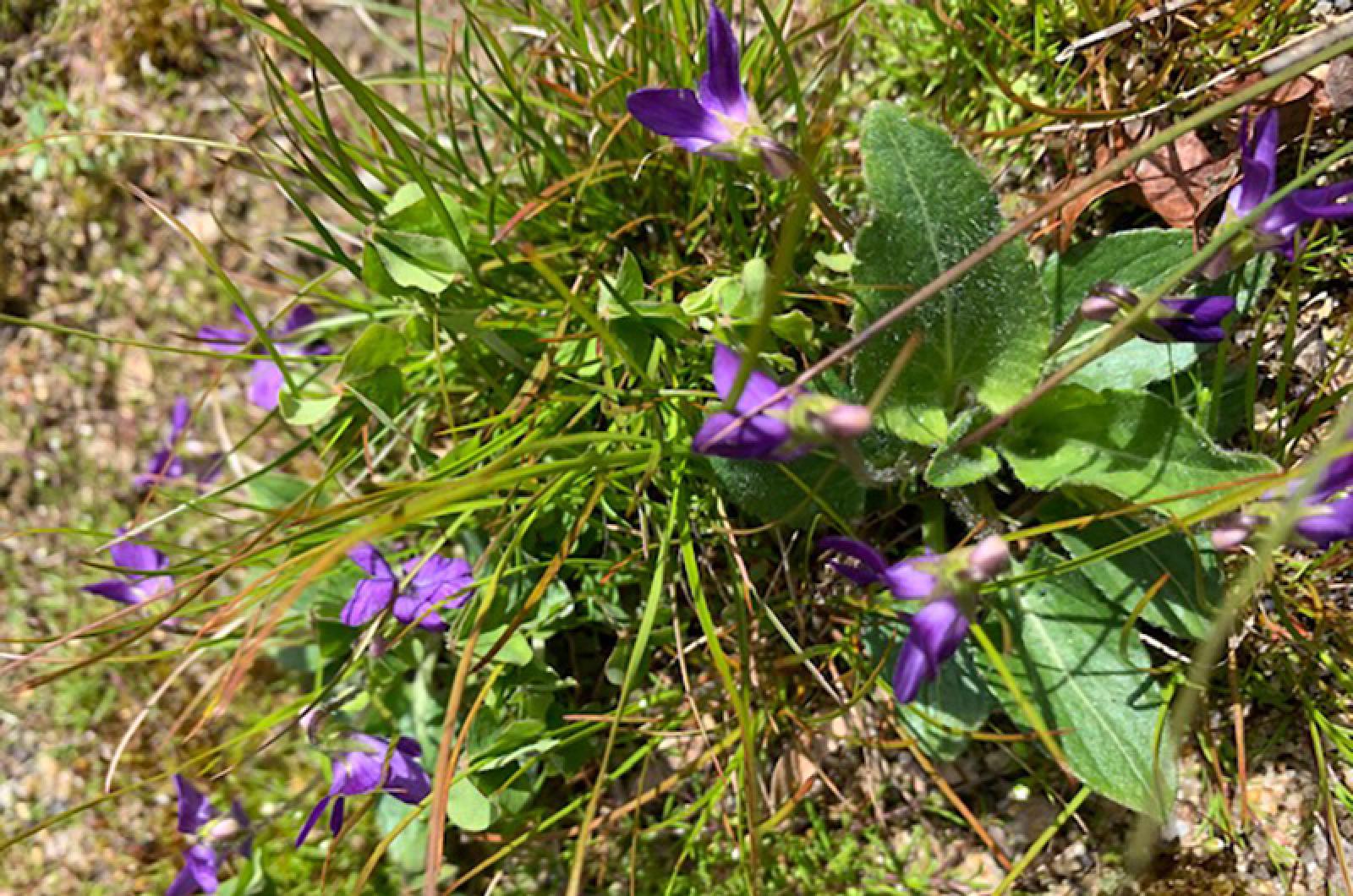Purple has always been my favorite color. I don’t need to wait until I am old to wear it. Nor do I, as Alice Walker suggested, “want to piss off God by walking by the color in a field and not noticing it.”
To keep the deities delighted, I observe and appreciate it every chance I get. In the still gray of the delayed West Tisbury spring, I have been seeing purple. Little bits of lavender are showing themselves in yards and along paths, and have even been so fierce as to find their way through the cracks of asphalt on a paved road.
The powerful purple pals of my observations are violets, whose strength extends beyond their energetic emergence. Violet’s origin story shares a tale of love, infidelity, betrayal and eventual ironic kindness. They were created by the mighty Zeus to provide beauty, fragrance and food for his lover. This sounds like a special gift until the whole story is revealed. The flowers were placed in a field for his sweetheart after he turned her into a cow to placate his wife once their affair was discovered.
Their alignment with love continued with Napoleon and Josephine, who bestowed them upon each other as tokens of their commitment. Violets still endure as a symbol of love. The plant’s heart-shaped leaves add to their romantic reputation, as does the intoxicating fragrance which only some violets have. There are some species of violets that are mostly scentless.
What is less sexy, though, is the effect the consumption of the plant has on the digestive system. Known to have mildly laxative properties, a passionate evening could turn into a not-so-amorous occasion if one overindulges. Both the leaves and flowers of violets are edible and, though they might be unwelcome on a date, their health benefits are numerous and compelling.
Scurvy is not a concern for anyone that consumes this plant, since it can have up to three times more vitamin C by weight than oranges. And, it seems, violets are a remedy for almost any ailment, from headaches to insomnia and even drunkenness and anger. The efficacy for pain is not surprising, since violets contain salicylic acid, the same component in aspirin that provides relief.
There are many ways to get your daily dose of violets. Leaves can be eaten fresh in salads, dried for teas or cooked like greens. The flowers offer even more intrigue and can be served for just about any course. They too can be enjoyed fresh in salads, steeped in vinegar, jellied or candied for dessert, and even as a drink. They are a favorite flavor for infused spirit or syrups for cocktails, an easy and impressive opportunity.
I took up the challenge and made violet-infused vodka, just enough for a drink during my (now daily) Zoom cocktail hour. The suggestion for violet ice cubes (freeze the fresh flowers in the cubes) was very tempting and would surely impress at a real dinner party. However, the cynic in me suspects the by the time we can once again have guests and dinner parties, the cubes might have freezer burn.
Eat up, drink up and absorb the beauty, frailty and power of the purple (or white and yellow, since some violet varieties are not purple). And if you choose not to partake, embrace the label of shrinking violet and wear it proudly.
Suzan Bellincampi is director of the Felix Neck Wildlife Sanctuary in Edgartown, and author of Martha’s Vineyard: A Field Guide to Island Nature and The Nature of Martha’s Vineyard.







Comments
Comment policy »